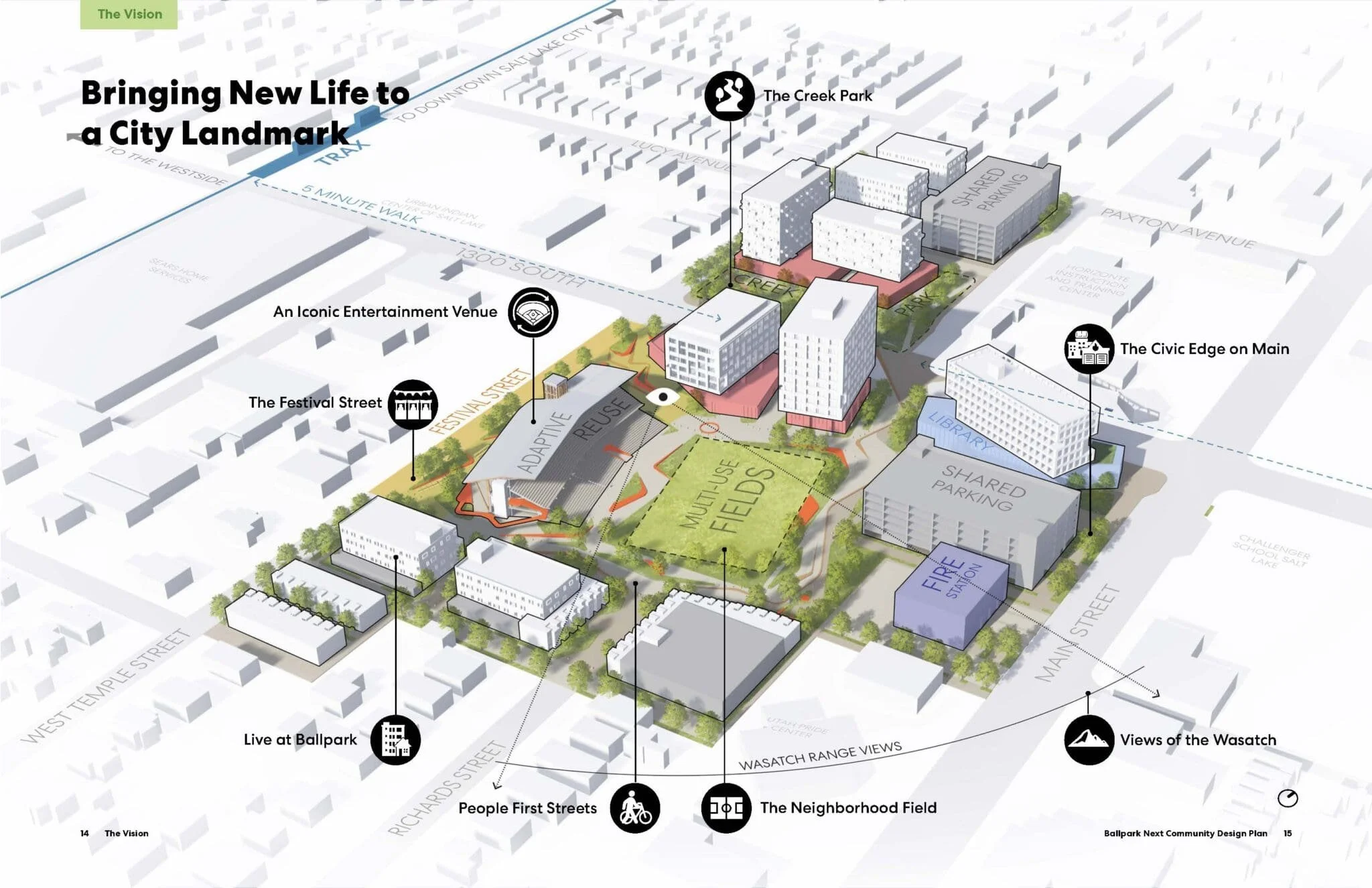Could Salt Lake City become a River City?
Authored by Nigel Swaby
Source: The West View
This article explains the work of the Seven Canyons Trust to demonstrate the importance of daylighting our creeks. It covers the Folsom Corridor and Three Creeks Confluence as a way to revitalize Salt Lake City.
Uncovering City Creek could improve connection from downtown to the Fairgrounds.
The most memorable features of some of the world's greatest cities are the rivers and waterways flowing through them. London's Thames, the Seine of Paris and the canals of Venice serve not only as sources of beauty and animal habitat, but as economic drivers for transportation, tourism and development.
Salt Lake City is named for the great lake in the western desert. The lake is refilled each year from water coming from the mountains. In the canyons, water flows unfettered and uncovered, but as it hits the city, it moves underground. That hasn't always been the case. Until about a hundred years ago, creeks and rivers flowed openly through the “City of Salt” and into the Jordan River.
To reduce flooding, waste contamination, and drowning deaths, the open creeks of Salt Lake City were buried underground. A plan that made sense then is no longer the best use for our waterways, according to Brian Tonetti of Seven Canyons Trust. The goal of this nonprofit is to uncover the city's rivers and creeks, a process called "daylighting."
Besides beautification, daylighting creeks has an important ecological effect. The nutrients in the water change when underground. Daylighting the water going into the Jordan River will help clean it, modify the species of birds and fish living in it and make the river more desirable for recreation. Recent algae blooms in Utah’s lakes and rivers are caused by nutrient imbalances.
Though the nonprofit has a very long timeline for reaching their goals, they've already made progress. A project known as the Three Creeks Confluence, first proposed only three years ago, will daylight about 200 linear feet of water where Red Butte, Parleys and Emigration creeks enter the Jordan River. The surrounding area at 1300 South and 900 West will be landscaped and transformed. An art installation was put in place in June. Construction begins this fall on the daylighting portion.
The Folsom Corridor project is the group’s most ambitious project to date. When complete, the group hopes to daylight about two miles of City Creek. This project will link Salt Lake’s downtown to the Fairpark neighborhood with a route essentially following South Temple west to the Jordan River directly across from the Fairgrounds.
This project will beautify and develop an open area currently home to I-15, railroad tracks, and older homes and businesses and was conceived in partnership with Salt Lake City, the Redevelopment Agency and Utah Transit Authority. Funding for a pedestrian and bicycle trail is already in place. Construction of that portion will occur within the next five years. At question is whether the daylighting portion of the Folsom Corridor will take place at the same time or in the future.
Transportation planner Colin Quinn-Hurst explained that while the trail and daylighting portions of the Folsom project have always been envisioned together, funding and construction have to be executed separately so the more complex daylighting portion doesn’t delay the trail. A route for the trail has been proposed, and the city won’t need to purchase more land or create easements to complete this part. Daylighting is much more complex as a final design, and costs are yet to be determined.
James Rogers, who represents Rose Park on the Salt Lake City Council, is one of the political champions of the daylighting portion. He is in favor of allocating $50,000 from the trail project budget to go toward a daylighting feasibility study in the fall. This study will determine the scope of the daylighting project.
As this project develops, some debate will take place over the cost and scope of daylighting City Creek. Precedent suggests there could be measurable economic benefits. Consider the case of Providence, Rhode Island. In the early 1990s, that city’s downtown area was in a similar situation. A river covered by a freeway, and old railroad tracks made that neighborhood undesirable to be around after dark. A daylighting project removed a bridge and railroad tracks and installed a landscaped, pedestrian-friendly pathway, which spurred private development of restaurants, bars and hotels. The city spent money developing an arts attraction, WaterFire, which attracts visitors from late spring to fall. The project resulted in the economic revitalization of downtown Providence.
Folsom supporters think development of the trail could accomplish a similar feat for the North Temple corridor. Considerable investment and improvements are taking place at the Fairgrounds and they believe it makes sense to further develop a connection between downtown and the Utah State Fairpark.




